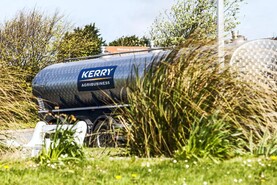A Wicklow suckler farm is clear of TB and has more grass after the Department of Agriculture fenced out wild deer.
Donard farmer Paddy Tyrrell’s herd went down with TB in June 2017 and again at a retest in August. Reactor cattle went for slaughter. The wild deer fence was erected in August.
Before it went up, wild deer had been entering his land from nearby forestry to graze his grass. “There used to be as many as 50 or 60 at a time,” he says. Once the fence went up, no more deer got on to his land.
The cattle tested clear of TB in November 2017 and again in January 2018. The six-month check test was carried out last May and it too was clear.
The electric fence was erected as a pilot study to see how the wild deer would react and to see if it would help eradicate TB from Tyrrell’s cattle herd. The fence is made up of six strands of wire and is over 6ft-high. The top strand is stepped forwards to give the fence more depth. It is powered by a standard mains fencer unit.
Cameras
Cameras are fitted to the wooden stakes to allow the Department assess the response of the wild deer to the fence.
Tyrrell said that for the first three months the deer regularly came up to the fence, although they didn’t cross it. “We could see the paths and the tracks they made.” However, visits by the deer dwindled and they haven’t come up to the fence in the past two months. “There are no tracks now.”
He said that in terms of grass supply for his cattle and sheep, the fence has been a clear success. “I have more grass. Local farmers who came to look at the fence couldn’t believe how much grass I have.” He knows it will take longer to assess if fencing has a role to play in keeping TB out of cattle herds.
The wild deer haven’t gone away. They’re still in the forestry and entering other farmers’ land. “This is rutting season and I can hear them in the forestry at night. There’s lots of deer around.”
His overall verdict on the fence: “I’m getting on great with it.”






 This is a subscriber-only article
This is a subscriber-only article









SHARING OPTIONS: